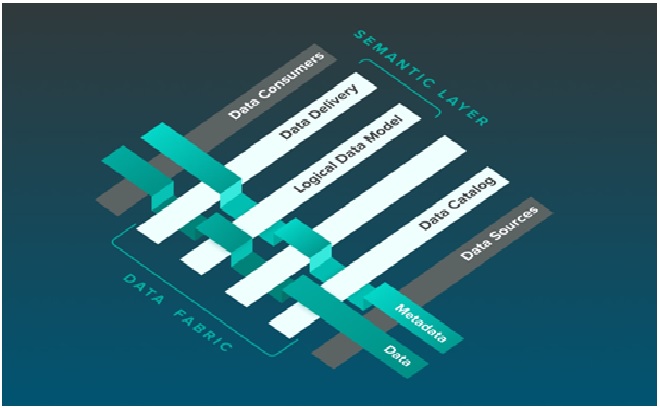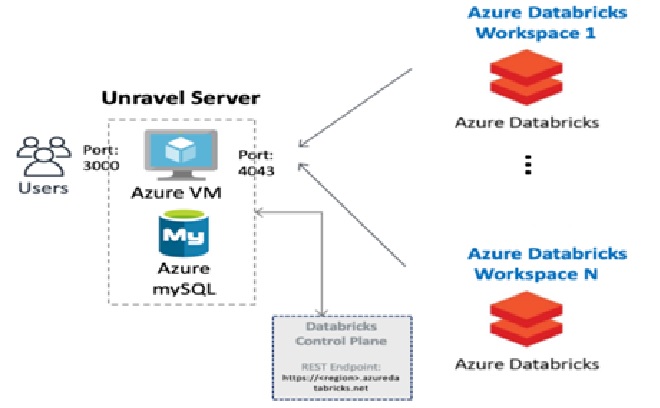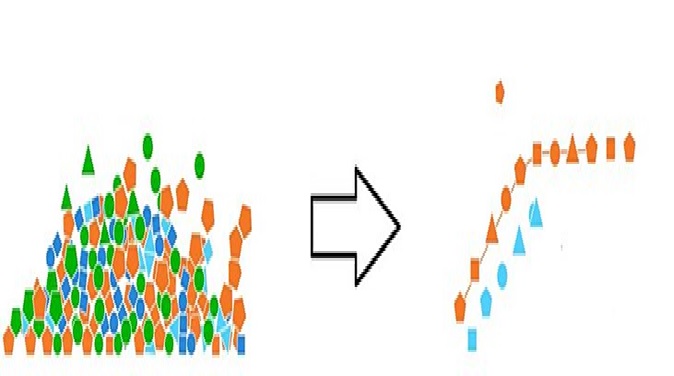The Technology Development of Data Fabric
A data fabric is an architectural approach to simplify data access in an organization to facilitate self-service data consumption. This architecture is agnostic to data environments, processes, utility and geography, all while integrating end-to-end data-management capabilities. A data fabric automates data discovery, governance and consumption, enabling enterprises to use data to maximize their value chain. [1] With a data fabric, enterprises elevate the value of their data by providing the right data, at the right time, regardless of where it resides.

Figure 1: Data Fabric [2]
A data fabric is, at its heart, an integrated data architecture that’s adaptive, flexible, and secure. In many ways, a data fabric is a new strategic approach to your enterprise storage operation, one that unlocks the best of cloud, core, and edge. [3] It can reach anywhere, including on premises, public and private clouds, and edge and IoT devices, while remaining centrally governed. The data fabric is shown in figure 1.
Gone are the days of disparate, disconnected infrastructures and data siloes the size of skyscrapers. A data fabric is built upon a rich set of data management capabilities that ensure consistency across your integrated environments. It reduces tedious management through automation, speeds up dev/test and deployment, and protects your assets 24x7x365.
From this unified platform, you can monitor storage costs, performance, and efficiency—the “who is using what and how”—regardless of where your data and applications live. Once you’ve gained actionable insight into your hybrid cloud environment, you can rapidly (and, in some cases, automatically) make changes to it, including remediating problems, addressing security and compliance risks, and dialing up and down compute.
Data fabric begins with online transaction processing (OLTP) concepts. In online transactional processing, detailed information about every transaction is inserted, updated, and uploaded to a database. [4] The data is structured, cleaned, and stored in silos at a center for further usage. Any user of the data, at any point in the fabric, can take the raw data and use it to derive multiple findings, helping organizations leverage their data to grow, adapt, and improve.
Successful implementation of data fabric requires:
- Application and services: Where the necessary infrastructure for acquiring data is built. This includes development of apps and graphical user interfaces (GUIs) for the customer to interact with the organization.
- Ecosystem development and integration: Creating the necessary ecosystem for gathering, managing, and storing the data. Data from the customer needs to be transferred to the data manager and storage systems in a manner that avoids loss of data.
- Security: The data collected from all sources is to be managed with proper security. Storage management: Data is stored in an accessible and efficient manner, with an allowance to scale when required.
- Transport: Building the necessary infrastructure for accessing the data from any point in the organization’s geographic locations.
- Endpoints: Developing the software defined infrastructure at the storage and access points to allow insights in real time.
References:
- https://www.ibm.com/in-en/analytics/data-fabric
- https://www.atscale.com/blog/what-is-a-data-fabric/
- https://www.netapp.com/data-fabric/what-is-data-fabric/
- https://www.tibco.com/reference-center/what-is-data-fabric
Cite this article:
Vinotha D (2022), The Technology Development of Data Fabric, AnaTechMaz, pp.46















